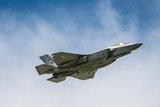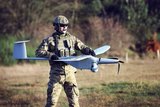BAE Systems and Sierra Nevada enter GHOST programme
BAE Systems and SNC are providing open architecture SIGINT technology for the USAF. (Photo: BAE Systems)
A team comprising BAE Systems and Sierra Nevada Corporation (SNC) has been awarded a contract by the USAF to provide a prototype design for the next-generation open architecture SIGINT technology under the Global High-altitude Open-system Sensor Technology (GHOST) programme.
The contract tasks the BAE-SNC team to provide a sensor prototype that gives insight into adversaries’ actions by collecting and analysing electronic signals. It will exploit the RF spectrum to detect, identify, locate, and track RF emissions.
This award represents a joint effort by BAE Systems and SNC to develop full-spectrum awareness and actionable intelligence with a SIGINT sensor design that provides solutions for airborne, ground, and maritime applications.
'Our SIGINT technology is one of the few on the market designed from the start with open architecture,' said David Logan, VP and GM of C4ISR Systems at BAE Systems.
More from Digital Battlespace
-
![Babcock nears first customer for Nomad AI translation tool]()
Babcock nears first customer for Nomad AI translation tool
Nomad can provide militaries with real-time intelligence, saving critical time on the battlefield.
-
![AUSA 2025: Israel’s Asio Technologies to supply hundreds of improved Taurus tactical systems]()
AUSA 2025: Israel’s Asio Technologies to supply hundreds of improved Taurus tactical systems
Taurus operates alongside the Israel Defense Forces’ Orion system which supports mission management across tens of thousands of manoeuvring forces, from squad leaders to battalion commanders.
-
![AUSA 2025: Kopin pushes micro-LED plans as China moves faster]()
AUSA 2025: Kopin pushes micro-LED plans as China moves faster
The plan for the new displays follows fresh investment in Kopin’s European facilities by Theon and an order for head-up displays in fielded aircraft, with funding from the US Department of Defense.
-
![AUSA 2025: Persistent Systems to complete its largest order by year’s end]()
AUSA 2025: Persistent Systems to complete its largest order by year’s end
Persistent Systems received its largest ever single order for its MPU5 devices and other systems earlier this month and has already delivered the 50 units to the US Army’s 4th Infantry Division.
-
![Aselsan brings in dozens of companies and systems under the Steel Dome umbrella]()
Aselsan brings in dozens of companies and systems under the Steel Dome umbrella
Turkey has joined the family of countries attempting to establish a multilayered air defence system with government approval in August 2024 for the effort landed by Aselsan. Dubbed Steel Dome, the programme joins Israel’s Iron Dome, the US Golden Dome, India’s Mission Sudarshan Chakra and South Korea’s low-altitude missile defence system.
-
![DSEI 2025: MARSS unveils new agnostic multidomain C4 system]()
DSEI 2025: MARSS unveils new agnostic multidomain C4 system
MARSS’ NiDAR system has been deployed using sensors from static platforms to provide detection and protection for static sights, such as critical infrastructure, ports and military bases.




























